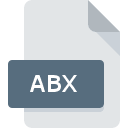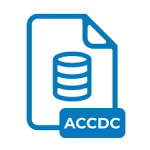.ACCDR File Extension

Access Runtime Application
| Developer | Microsoft |
| Popularity | |
| Category | Database Files |
| Format | .ACCDR |
| Cross Platform | Update Soon |
What is an ACCDR file?
The .ACCDR file extension is associated with Microsoft Access, a database management system (DBMS) from Microsoft that combines the relational Microsoft Jet Database Engine with a graphical user interface and software-development tools. An .ACCDR file is essentially an Access application that is locked down to run in runtime mode. This means that it can be used to execute the database application without allowing design changes to be made.
More Information.
Microsoft Access was designed to allow users to create and manage databases, offering tools to build forms, reports, and queries easily. However, to safeguard the integrity of database applications in a production environment, Microsoft introduced the .ACCDR file extension. The main purpose was to offer a read-only mode of the Access application, limiting user permissions to prevent accidental or intentional modifications to the design and structure of the database.
Origin Of This File.
The .ACCDR file format was introduced by Microsoft as part of the Microsoft Access 2007 release. The extension was developed to provide a way to deploy Access applications in a more controlled manner, ensuring that end-users could interact with the data and use the application without altering its design.
File Structure Technical Specification.
An .ACCDR file is structurally identical to a standard .ACCDB file (the default Access database file). The key difference lies in the file extension. Changing the extension from .ACCDB to .ACCDR tells Access to open the file in runtime mode. The underlying database structure, including tables, queries, forms, reports, macros, and modules, remains the same.
How to Convert the File?
Windows
- Rename the File:
- Locate the .ACCDR file in File Explorer.
- Right-click the file and select “Rename.”
- Change the file extension from
.ACCDRto.ACCDB. - Confirm the change if prompted by the system.
- Open with Microsoft Access:
- Double-click the renamed file (.ACCDB).
- Microsoft Access will open the file in design mode, allowing full access to design and development features.
Linux
- Use Wine:
- Install Wine to run Windows applications on Linux.
- Install Microsoft Access or Access Runtime through Wine.
- Rename the File:
- Open a terminal and navigate to the directory containing the .ACCDR file.
- Use the
mvcommand to rename the file.
- Open with Access via Wine:
- Use Wine to open the renamed .ACCDB file with Microsoft Access installed via Wine.
Mac
- Parallels Desktop or VMware Fusion:
- Install Parallels Desktop or VMware Fusion to run a Windows virtual machine on your Mac.
- Install Microsoft Access within the Windows virtual machine.
- Rename the File:
- Inside the Windows VM, navigate to the .ACCDR file.
- Right-click and rename the file extension from
.ACCDRto.ACCDB.
- Open with Microsoft Access:
- Open the renamed .ACCDB file using Microsoft Access within the Windows VM.
Android
- Remote Desktop:
- Use a remote desktop application (such as Microsoft Remote Desktop) to connect to a Windows PC that has Microsoft Access installed.
- Rename and Open:
- On the remote Windows PC, rename the .ACCDR file to .ACCDB and open it with Microsoft Access.
iOS
- Remote Desktop:
- Use a remote desktop application (such as Microsoft Remote Desktop) to access a Windows PC with Microsoft Access installed.
- Rename and Open:
- Rename the .ACCDR file to .ACCDB on the remote Windows PC and open it with Microsoft Access.
Others
- Cloud Services:
- Use cloud-based services like Microsoft 365.
- Upload the .ACCDR file to OneDrive.
- Use Access in the Microsoft 365 web portal to open the file.
- The file may need to be renamed from .ACCDR to .ACCDB before uploading.
- Cross-Platform Applications:
- There are limited third-party applications that support Access files, and conversion may not be straightforward. The safest method remains using a Windows environment, either directly or via virtualization or remote access.
Advantages And Disadvantages.
Advantages:
- Data Protection: Prevents users from making design changes to the database application.
- User-Friendly: Simplifies the user experience by providing a streamlined interface focused on data entry and reporting.
- Deployment: Facilitates easier and safer deployment of Access applications.
Disadvantages:
- Limited Functionality: Restricts the ability to modify forms, reports, and other design elements.
- Dependence on Access Runtime: Requires the Microsoft Access Runtime environment to open and use the file.
- Compatibility Issues: Not all features of the full Access application are available in runtime mode.
How to Open ACCDR?
Open In Windows
- Microsoft Access: Directly open the .ACCDR file using Microsoft Access or Access Runtime.
- Access Runtime: Install the Microsoft Access Runtime environment if the full version of Access is not available.
Open In Linux
- Wine: Use Wine to run Microsoft Access Runtime or the full version of Microsoft Access.
- Virtual Machine: Install a Windows virtual machine with Access or Access Runtime.
Open In MAC
- Parallels Desktop: Use Parallels Desktop to run a Windows virtual machine with Microsoft Access or Access Runtime.
- Wine: Similar to Linux, use Wine to run Microsoft Access Runtime, though compatibility might be limited.
Open In Android
- Remote Desktop: Use a remote desktop application to access a Windows machine with Microsoft Access.
- No Native Support: There is no direct way to open .ACCDR files on Android.
Open In IOS
- Remote Desktop: Similar to Android, use a remote desktop application to connect to a Windows machine with Access.
- No Native Support: Direct opening of .ACCDR files is not supported on iOS devices.
Open in Others
- Cloud Services: Use cloud-based services such as Microsoft 365 with Access in a web browser, though .ACCDR functionality may be limited.
- Cross-Platform Applications: Some third-party applications may offer limited support or viewing capabilities for Access files.













